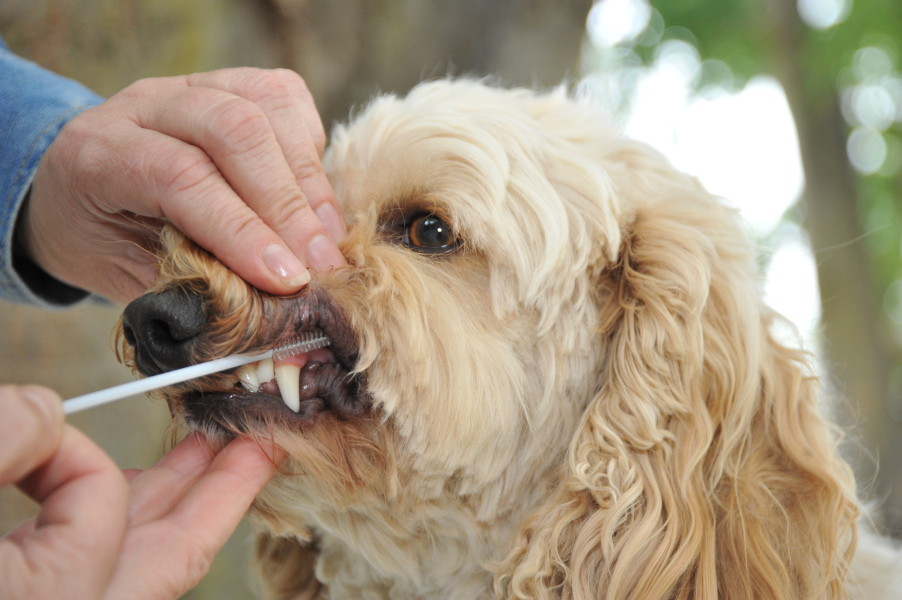Quick Summary
Click here for Price and Turnaround Time
Phenotype: Affected dogs display neurological signs that begin at 9-12 months of age and may include tremor, incoordination or stiff gait, and difficulty eating. Progressive neurological deterioration occurs over the next 6-12 months, resulting in death.
Mode of Inheritance: Autosomal recessive
Alleles: N = Normal, GM2 = GM2 gangliosidosis
Breeds appropriate for testing: Toy Poodle and Toy Poodle crosses
Explanation of results:
• Dogs with N/N genotype are expected to not have GM2 gangliosidosis. They cannot transmit this GM2 allele to any of their offspring.
• Dogs with N/GM2 genotype have one copy of the GM2 allele and are expected to not have GM2 gangliosidosis but are carriers. They will transmit this GM2 allele to 50% of their offspring. Matings between two carriers of GM2 may, on average, produce 25% of puppies with GM2 gangliosidosis.
• Dogs with GM2/GM2 genotypes are homozygous for the GM2 allele and will display signs of GM2 gangliosidosis
Sample Collection
Dog DNA tests are carried out using cells brushed from your dog's cheeks and gums. The preferred cytology brushes are sent to you by mail, or you may provide your own brushes. For accepted alternative brushes, click here
We recommend waiting until puppies are at least three weeks old before testing.

Step-By-Step:
- Make sure the dog has not had anything to eat or drink for at least 1 hour prior to collecting sample.
- When swabbing puppies, isolate each puppy from the mother, littermates and any shared toys for 1 hour prior to swabbing. Puppies should not have nursed or eaten for 1 hour prior to collecting sample.
- If collecting samples from more than one dog, make sure to sample one dog at a time and wash your hands before swabbing another dog.
- Label brush sleeve with name or ID of dog to be sampled.
- Open brush sleeve by arrow and remove one brush by its handle.
- Place bristle head between the dog’s gums and cheek and press lightly on the outside of the cheek while rubbing or rotating the brush back and forth for 15 seconds.
- Wave the brush in the air for 20 seconds to air dry.
- Insert brush back into sleeve.
- Repeat steps 5 - 8 for each unused brush in sleeve on a fresh area of cheek and gums. Make sure to use and return all brushes sent by the VGL. In most cases, it will be 3 brushes per dog. If using interdental gum brushes, please note that the VGL requires 4 brushes per dog and only moderate or wide interdental gum brushes are accepted.
- Do not seal brushes in sleeve.
- Place all samples in an envelope and return to the address provided.
ATTENTION:
- Do not collect saliva/drool – the key to obtaining a good sample is getting cheek cells on the swab
- Do not rub swab on the dog’s tongue or teeth – this will result in poor quality sample
- Do not collect a sample from a puppy that has recently nursed – the mother’s genetic material can rub off on the puppy’s mouth and contaminate the sample
GM2 gangliosidoses are a group of lysosomal storage diseases that cause progressive destruction of nerve cells in the spinal cord and brain of dogs and humans. Sandhoff disease is a form of GM2 gangliosidosis that is caused by genetic variants in the HEXB gene.
A 2012 publication described a single base deletion (c.283delG) in the canine HEXB gene that was associated with GM2 gangliosidosis in Toy Poodles. The study described three affected related dogs, all presenting with motor disorder including incoordination (ataxia) and tremor. The dogs were 9-12 months old when they first started showing signs of neurological disorder. Initial signs consisted of vomiting and frequent stumbling or falling. Two of the dogs also had difficulty eating and frequent vomiting. Neurodegeneration progressed over the next 9-12 months, resulting in death for two of the dogs. The third dog was euthanized due to its debilitating state. A fourth case was later identified in another closely related family. All affected dogs were homozygous for the one base deletion in the HEXB gene (c.283delG) and all obligate carriers were heterozygous.
Researchers were not able to identify any other dogs carrying this genetic variant in a population of 215 randomly selected Toy Poodles, suggesting that this is a rare mutation limited to certain pedigrees with a common ancestor.
Testing recommendations: GM2 gangliosidoses is a fatal disorder, resulting in death within the first 2 years of life. DNA testing for GM2 gangliosidoses can determine the genetic status of dogs. Dogs with one copy of the GM2 variant are normal but are carriers. Matings between two carrier dogs may, on average, produce 25% of puppies with GM2 gangliosidoses.
